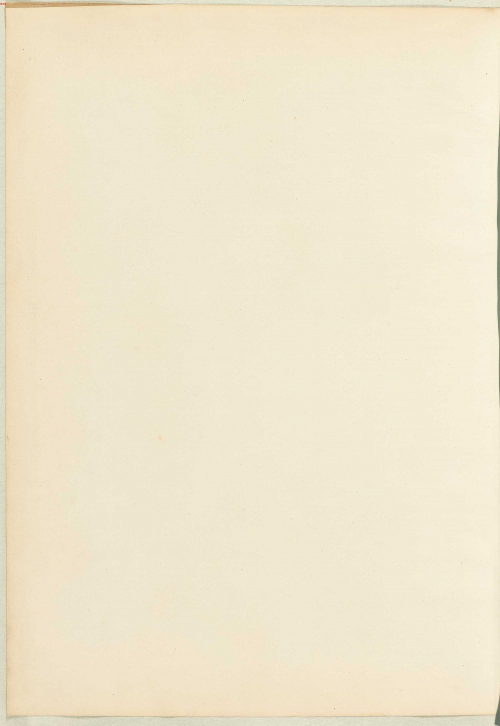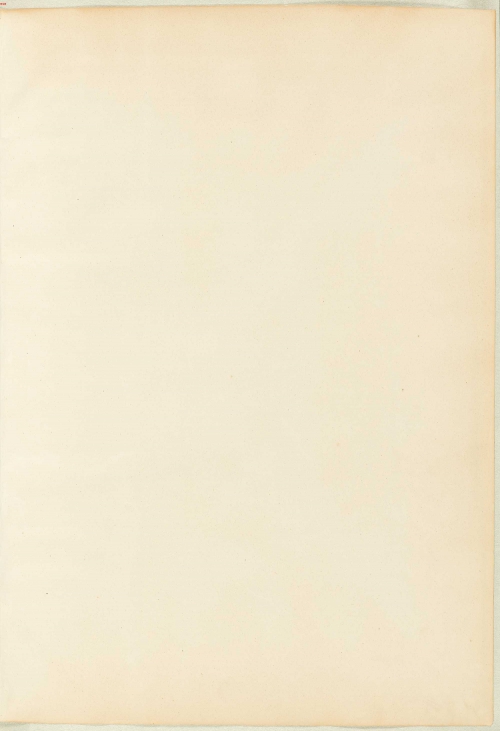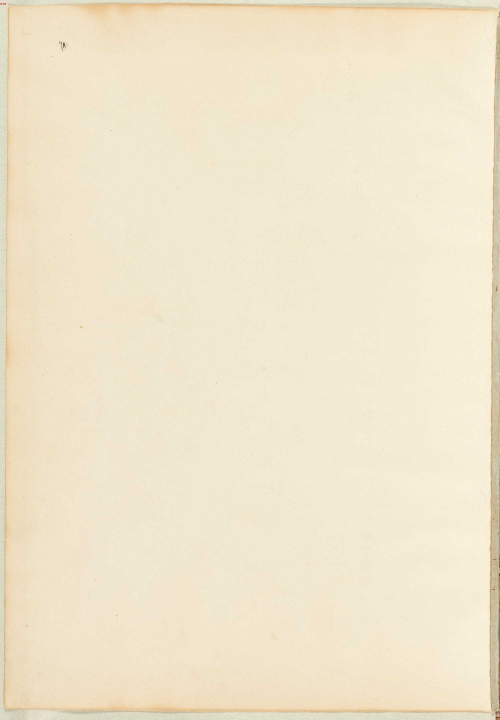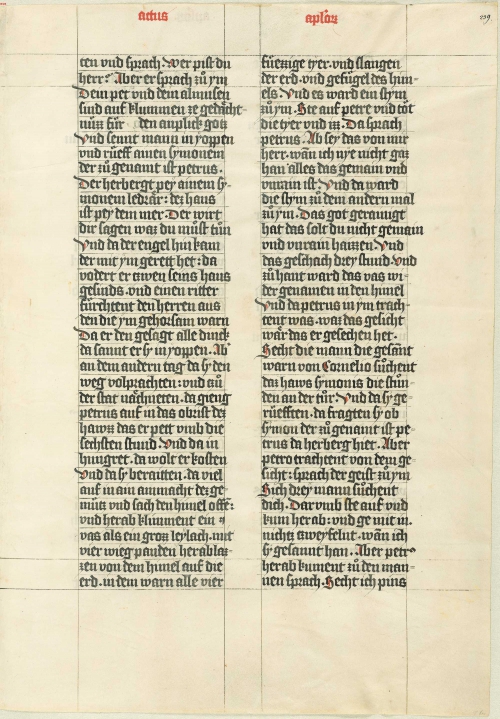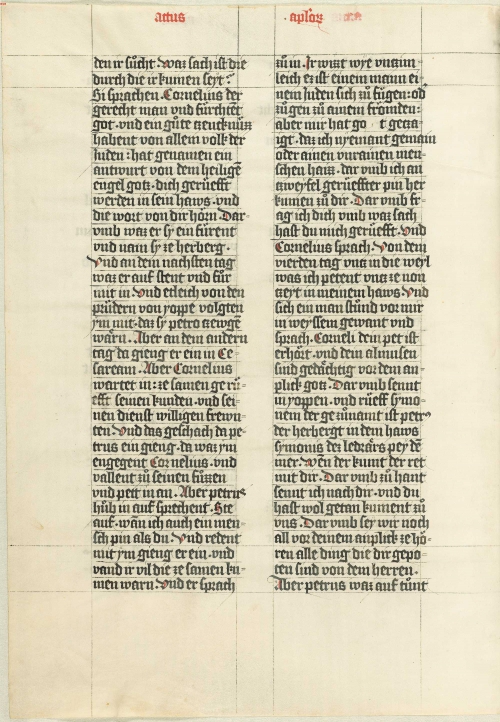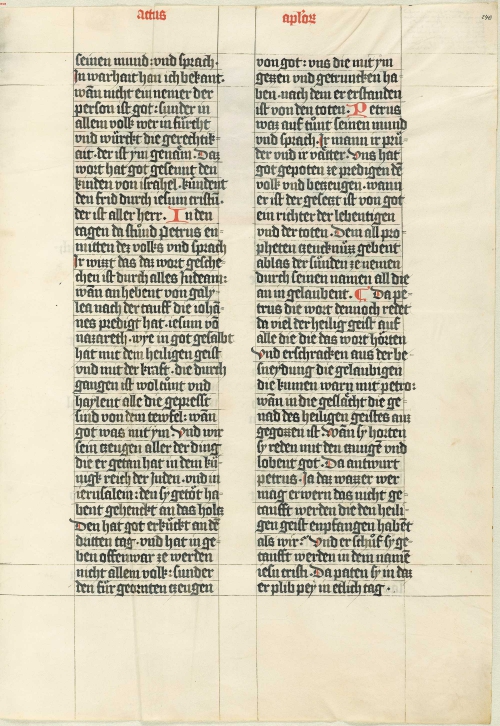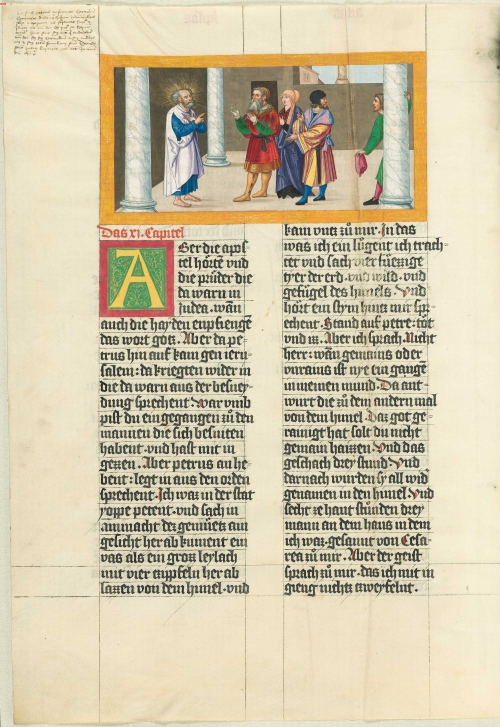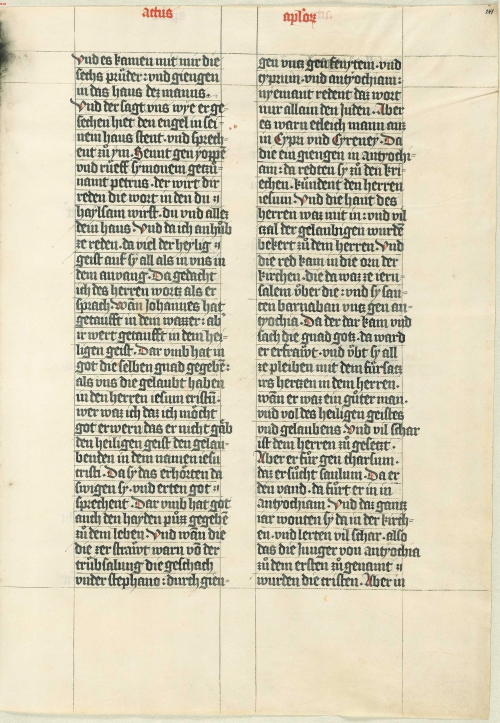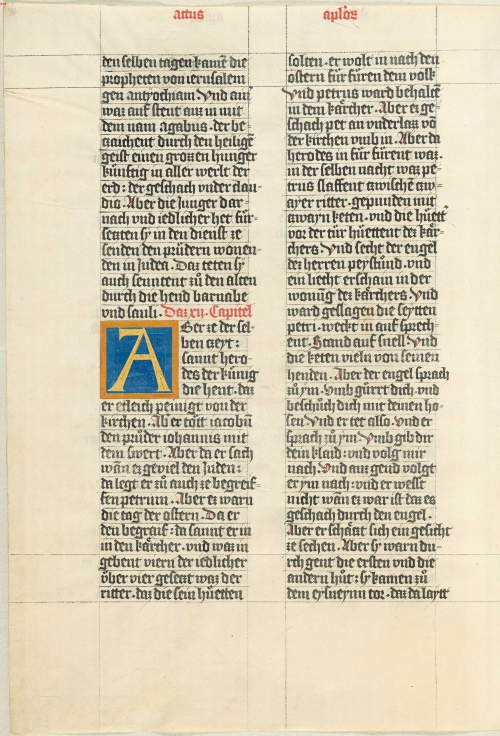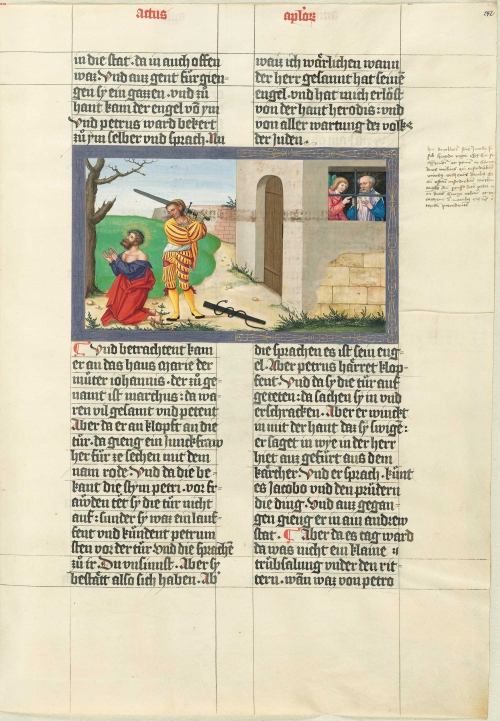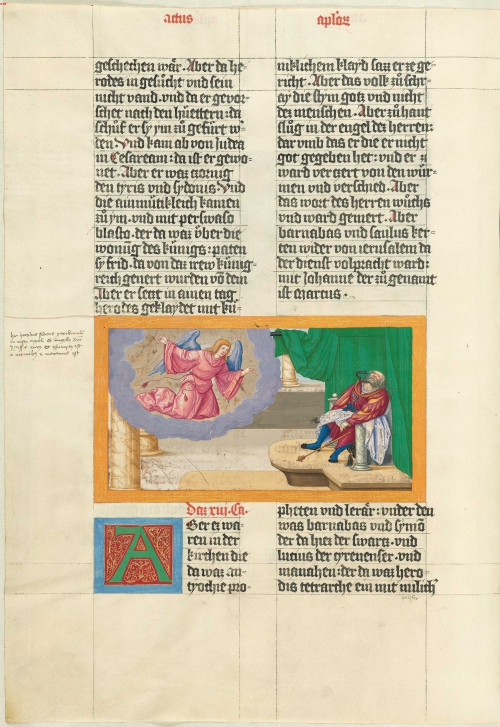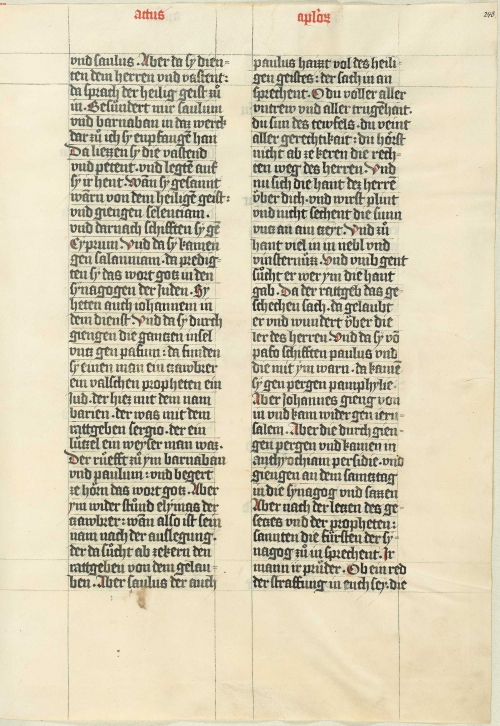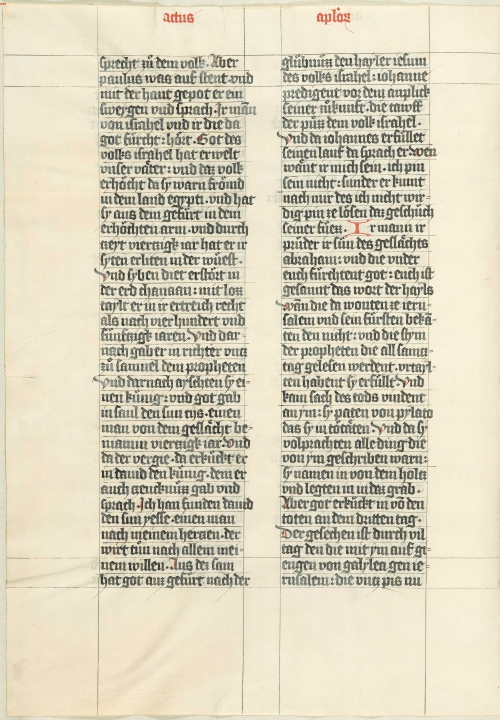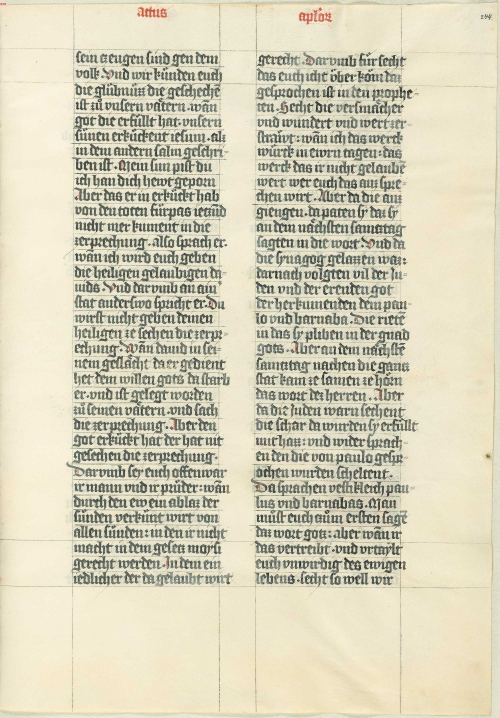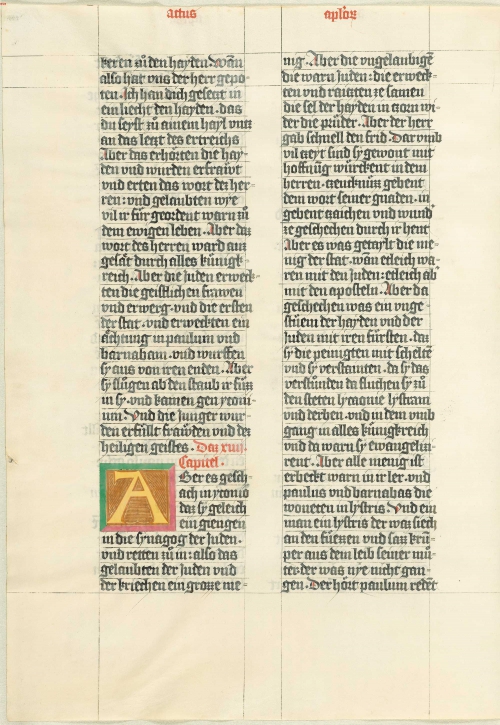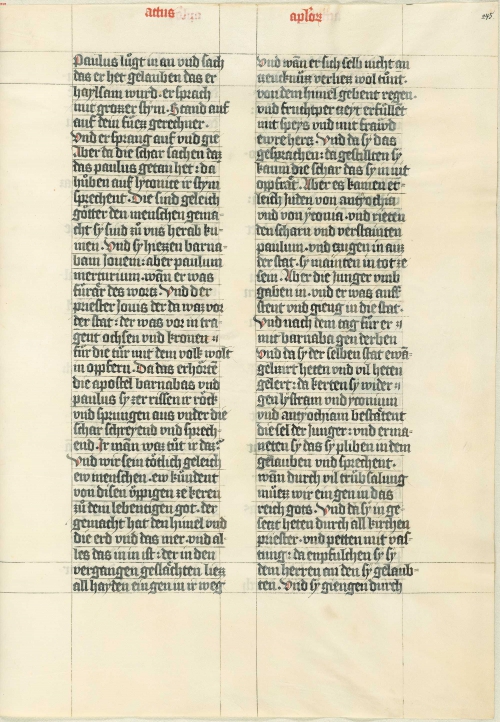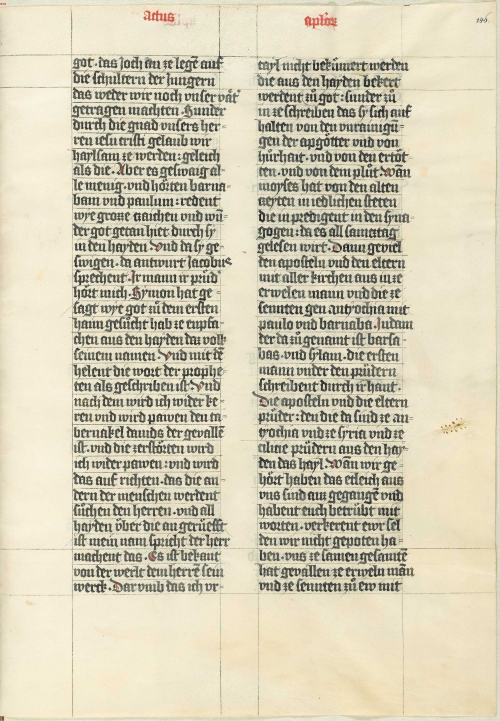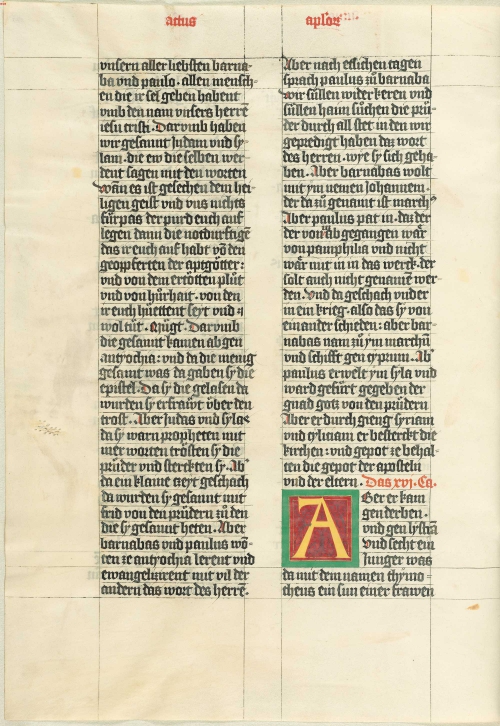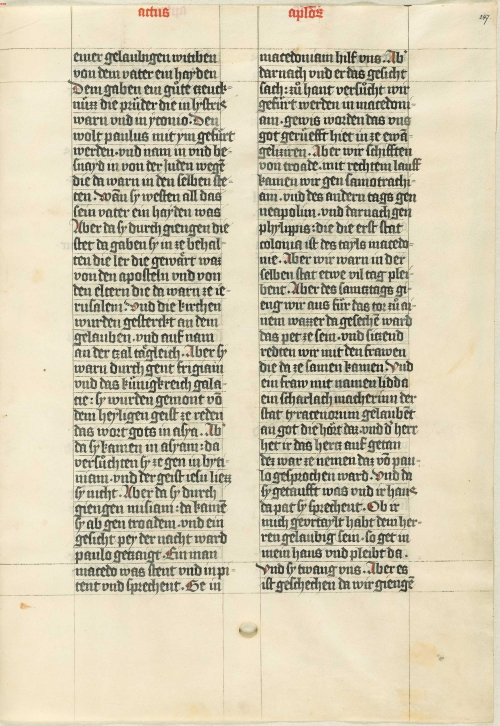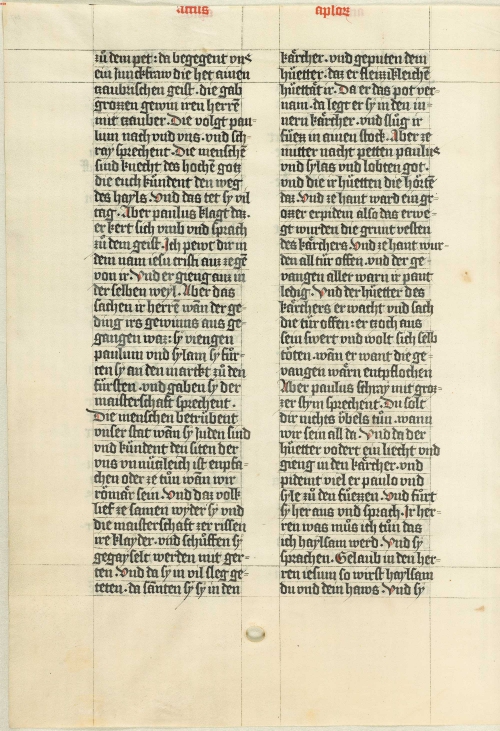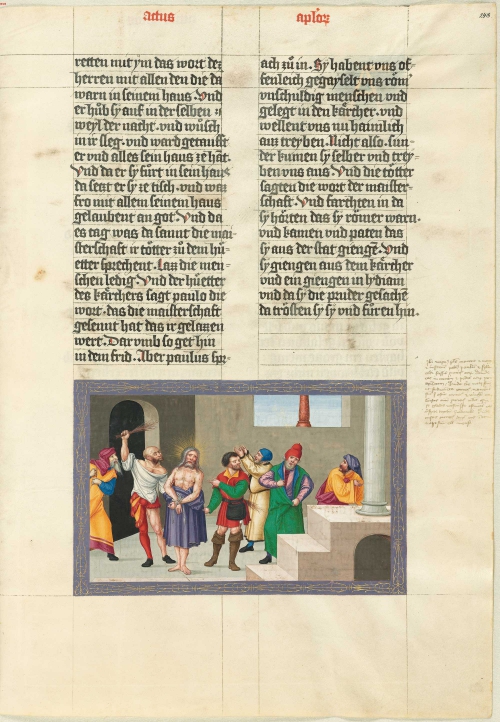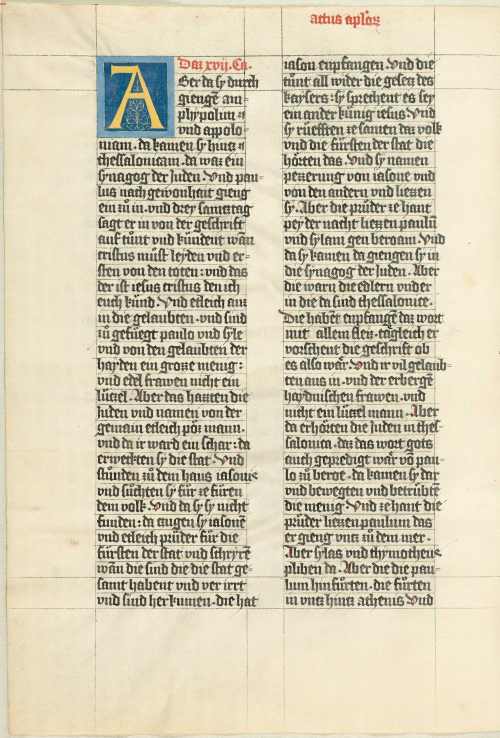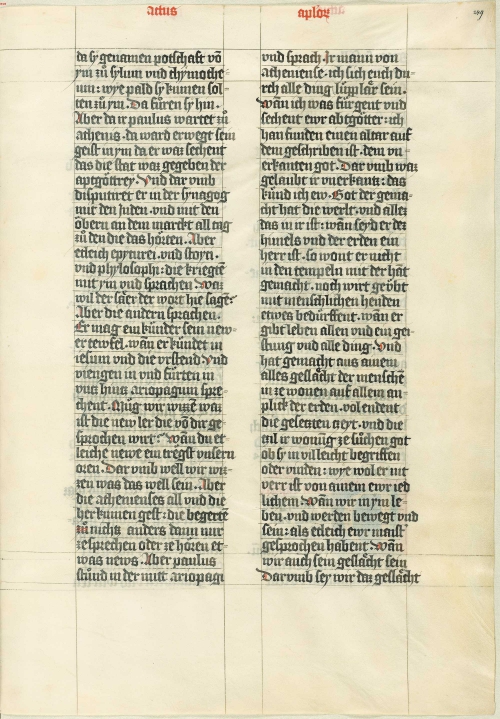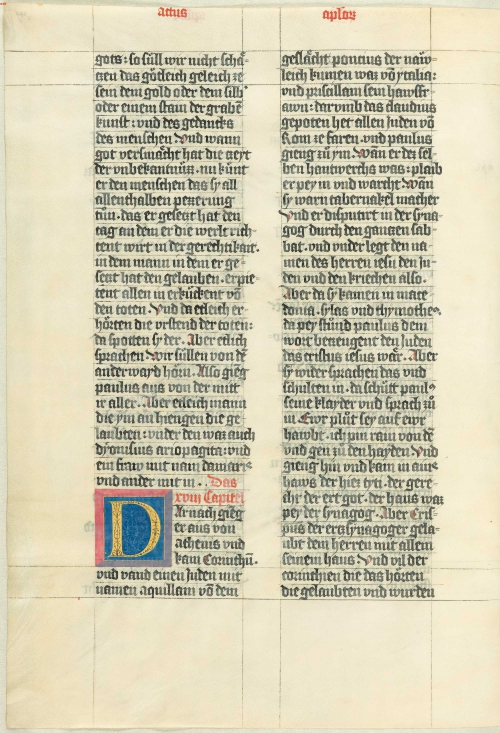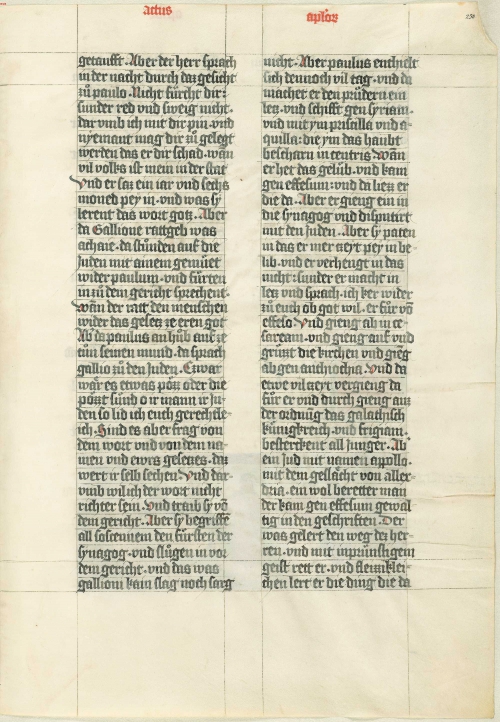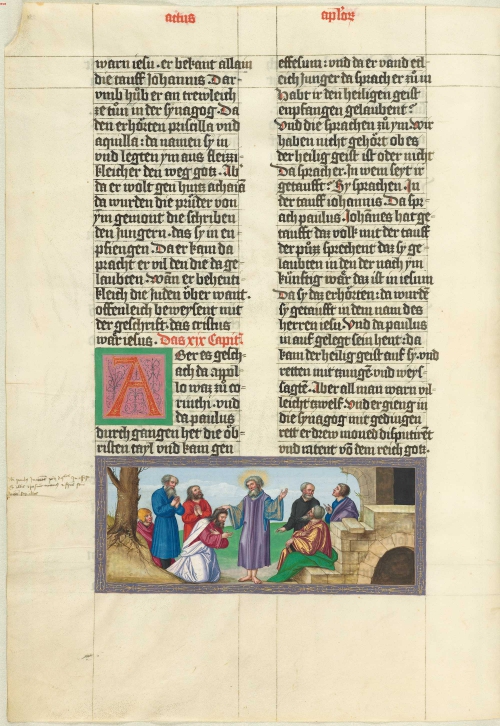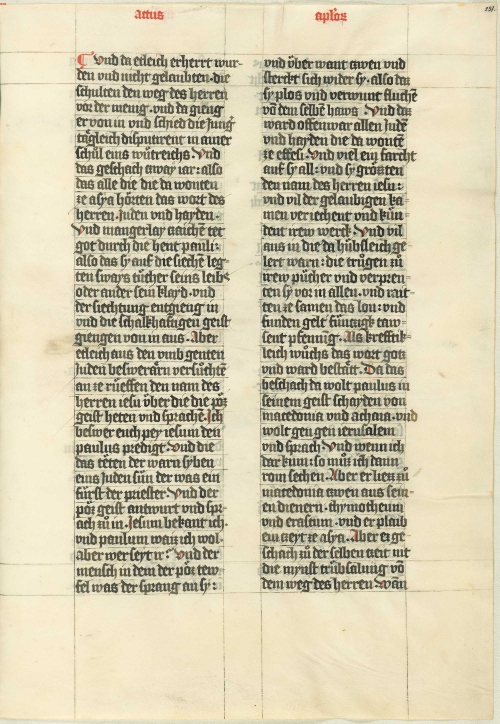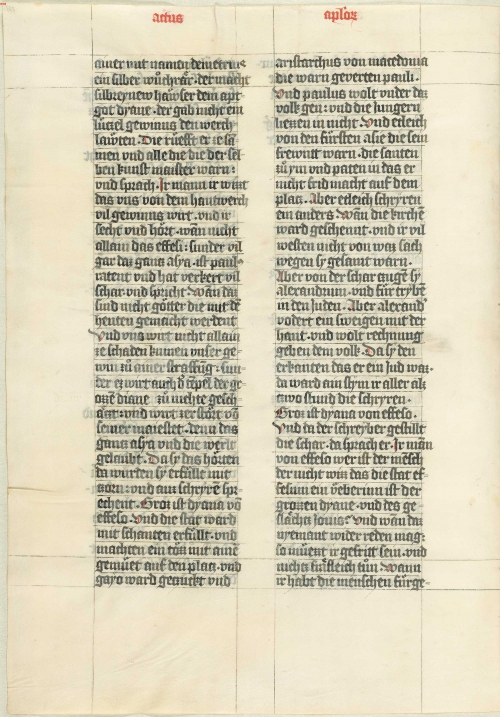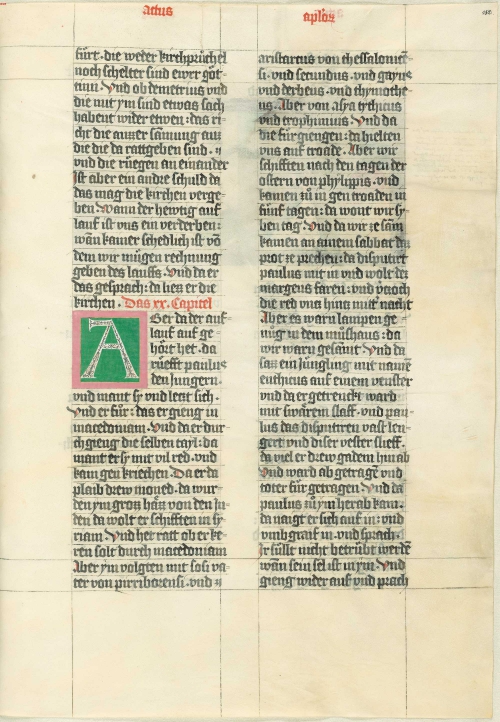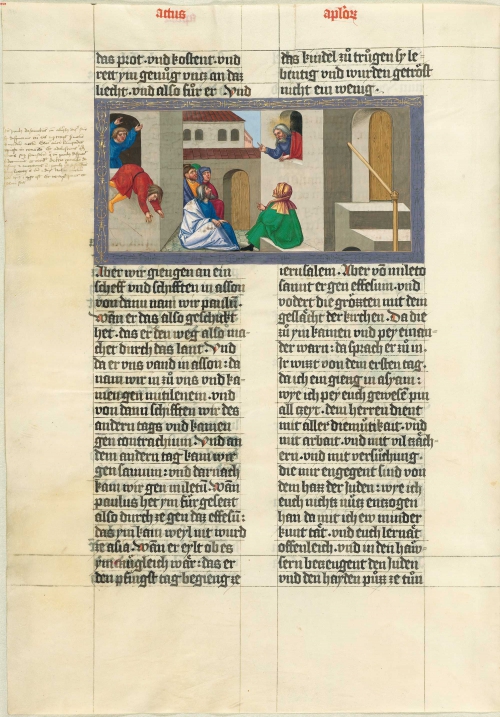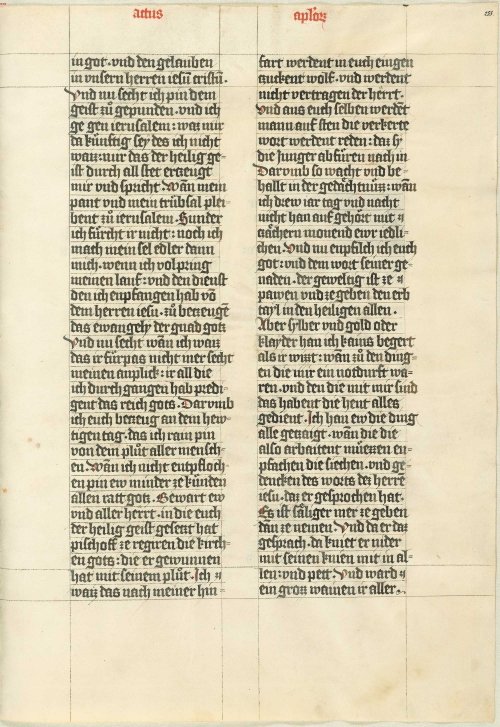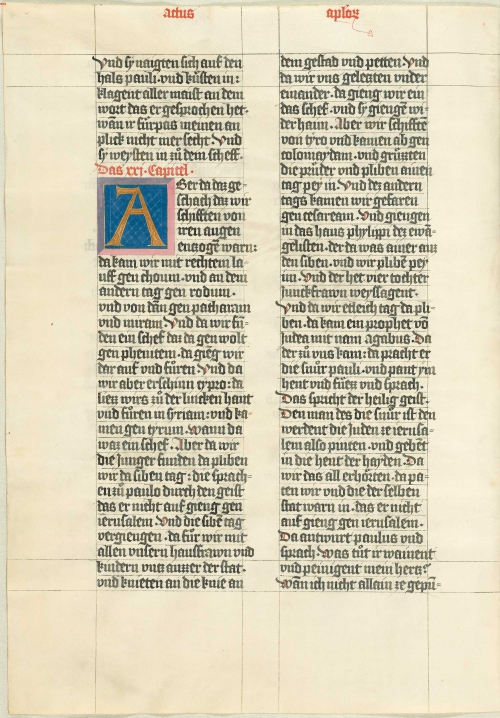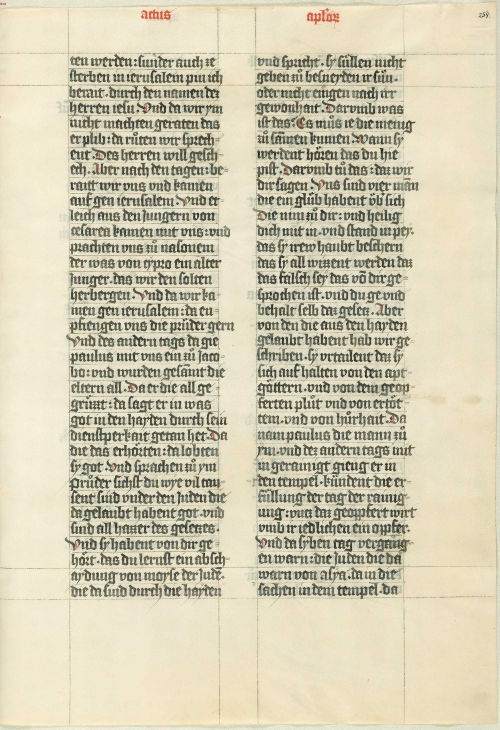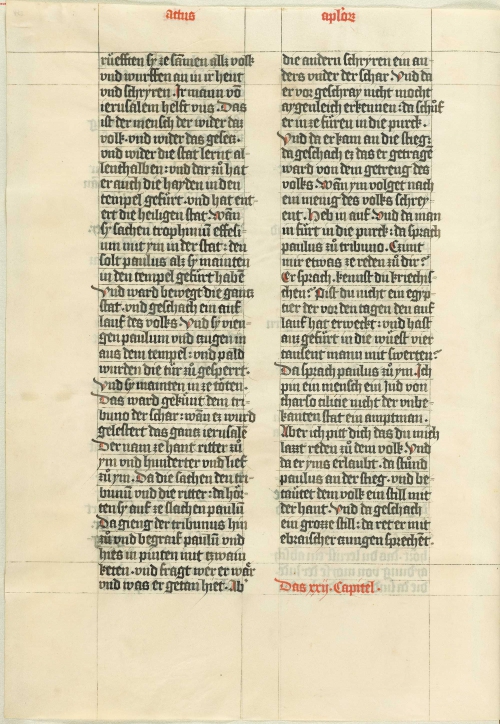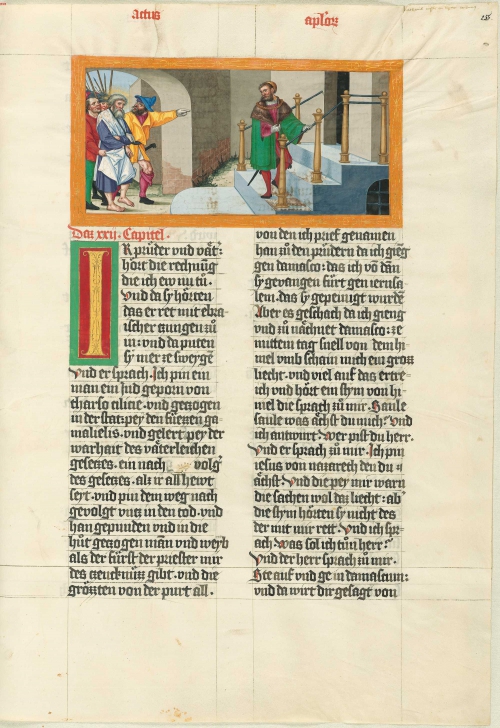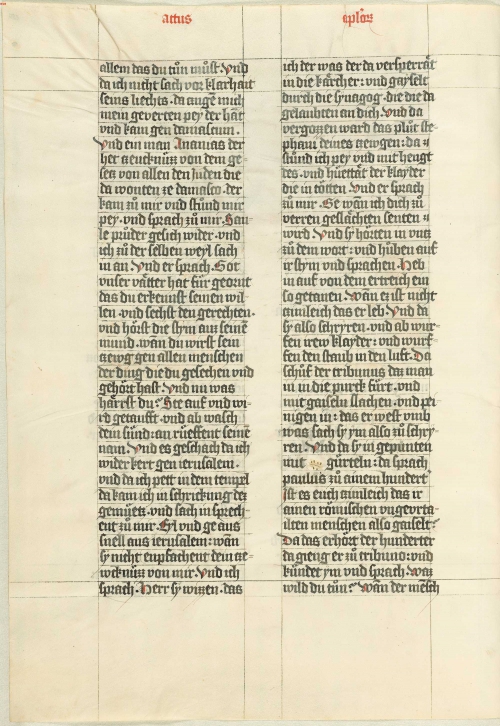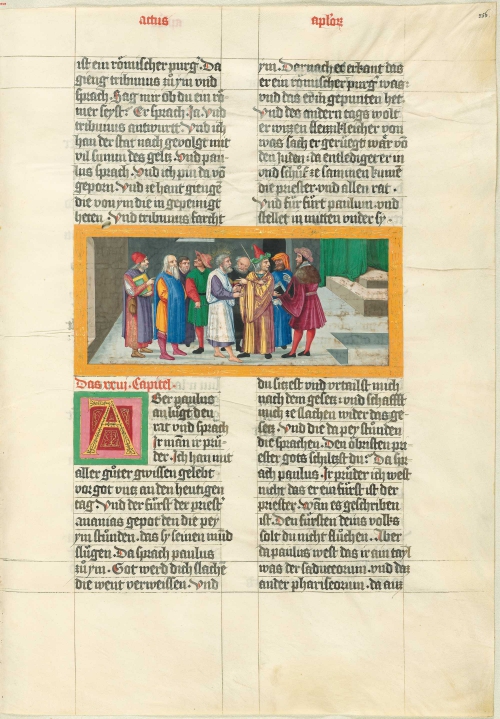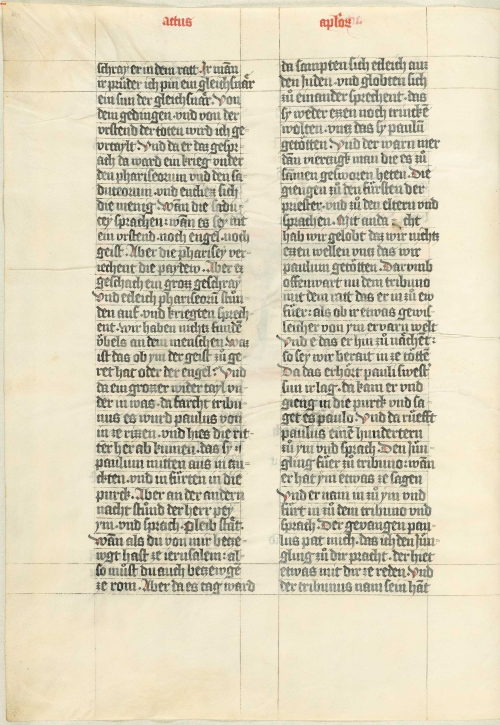Die Ottheinrich-Bibel (1425 - 1430) (683 pictures)
Otthainrich Bible, The Otthainrich Bible is an illuminated manuscript of the New Testament, believed to be the first German edition of its kind. Created between 1425 and 1430, the Bible received its common name in honor of its most famous owner, Elector Ottheinrich.
It is safe to say that the manuscript was created on the orders of the Duke of Bavaria-Ingolstadt, Ludwig VII the Bearded. This is confirmed by the coats of arms of Bavaria and France, depicted on the binding and flyleaf, as well as the French motto fr. De bon ceur vray sans repentir a tout iour - from 1391 to 1415, Ludwig VII lived in France at the court of his sister Queen Isabeau and her husband Charles VI. There he became a bibliophile, and upon returning to Germany he built a French-style castle in Ingolstadt and collected a collection of manuscripts.
In the 15th century, Bavaria, divided into three duchies, was the scene of dynastic conflicts in which fortune was not on the side of Louis VII. After losing to his rival Duke Henry XVI, Ludwig died in 1447 in Burghausen prison. This may explain why the initial work on the manuscript was left unfinished. An inventory of Ludwig's books compiled in 1446 includes five manuscripts in German, the last of which has the following description: German. Item sunst hat man auch ein puch mit hertzog Ludwigen gein Burkhausen gefurt und ist novum et vetus testamentum deutsch. Thus the book was sent to Ludwig in Burghausen. It is impossible to say with certainty that it is the Otthainrich Bible, since the latter, as we know it, does not include the Old Testament. At that time it was still in one volume (German: ein puch).
After the death of Louis VII, his estates passed to his cousin Henry XVI, then to his son and grandson, George the Rich. It is likely that the unfinished Bible was inherited through this line. After George's death, the Bavarian lands were united by a representative of another Wittelsbach line, Duke Albrecht IV, and the possessions and art collection in Neuburg went to George's grandson, Count Palatine Ottheinrich. The latter became the first undoubted owner of the Bible.
In 1530, Otthainrich ordered the artist Matthias Gerung to complete the design of the manuscript. There are two known contracts with Gerung, dated December 23, 1530 and September 24, 1531. Having inherited the Electoral Palatinate in 1556, Ottheinrich probably transported the Bible to Heidelberg, since there is a known mention of a similar book in the inventory of the library of the Cathedral of the Holy Spirit, dated 1581. Then there is a similar entry in 1610 for the personal elector library.
Heidelberg suffered greatly during the Thirty Years' War. For a brief period in 1621 - 1622, the Bible was in the hands of Pope Gregory XV in the Vatican along with the Palatine Library. Then in September 1622 the city was conquered by Bavarian troops under the leadership of Count Tilly, and at the end of November the precious book, along with other remaining manuscripts, was delivered to Munich to the library of Elector Maximilian I, whose coats of arms can now be seen on the back cover.
In 1632, the Swedish army captured Munich and the Otthainrich Bible fell into the hands of King Gustav II Adolf, who presented it to Duke Wilhelm IV (German). Saxe-Weimar. Thus the book first appeared in Weimar, and then when Wilhelm gave it to his brother, Duke Ernst I of Saxe-Gotha, who transported it to his court in Gotha.
Passed down through the family of the Dukes of Saxe-Gotha-Altenburg, the Bible is listed in the book inventories of 1704, 1709 and 1714 among the books of Ernst I's grandson, Frederick II. With the death of the great-great-grandson of Frederick II, the book passed into the line of the Dukes of Saxe-Coburg-Saalfeld, to Duke Ernst I, under whom the study of the Ottheinrich Bible began. In 1836, its first description appeared. In the 1860s, the medieval bindings were removed, although they continued to be preserved in the Gotha, and the book itself was divided into 8 small volumes according to the unity of the illumination style. This made it possible to demonstrate and study the book in different places. Since the end of the 19th century, the Otthainrich Bible has become widely known as one of the most important German books of the late Middle Ages.
In 1936, five volumes of the Bible were transferred temporarily from Gotha to the Kurpfalz Museum in Heidelberg in exchange for two paintings by Lucas Cranach, subsequently expropriated by the Red Army during the Second World War. The ducal family managed to take the manuscripts to West Germany, where they were preserved in the Saxe-Coburg-God Dynasty Foundation. Volumes I, II and VII were acquired by the Bavarian Library in 1950, and a facsimile was published in 2002. The remaining volumes, periodically appearing at specialized exhibitions, remained the last manuscripts of the Palatine Library remaining in private hands.
On December 4, 2007, five Saxe-Coburg-Gotha volumes were to be sold at Sotheby's auction. The estimate for the lot was approximately 2 million fu
ntov sterling. On November 30, 2007, it was reported that the Bavarian Library was able to raise the necessary amount and buy back this treasure of German culture.
The text of the manuscript includes a German translation of the New Testament from the Latin Vulgate and is the largest surviving manuscript of the Bible from the pre-Luther era.

